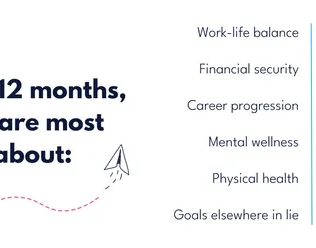How to build a better benefits program for 2023 and beyond

Talenza recently hosted a webinar with Brett Turley, CEO and co-founder of Bit.Leave for his insights and tips on maximising the impact of your employee benefits program. This article is a summary of the presentation. You can watch the webinar here.
Forty per cent of candidates say that benefits were a clear factor that contributed to them looking for a new role (Talenza 2022 Candidate Motivator’s Report). With employee benefits taking on a more critical role in talent attraction, Brett shares with us what employers can be doing better to increase awareness, adoption, and utilisation of their programs.
Measuring ROI on benefits platforms
How can you know if you’re getting the most from your benefits program if you’re not actually tracking and measuring engagement?
According to Brett, current in-service benefits platforms see a 10% adoption rate on average. That’s not a long-term usage metric, that’s just to say that 10% of the organisation logged in and used the platform once. 😱
What’s going wrong?
Why organisations struggle to measure ROI
- Most benefits platforms don’t provide the data for organisations to track and measure.
- EVP is only focused on talent attraction, not retention.
- Platforms can be highly manual to administer when you’re already time poor.
- Most HR people aren’t data experts, so don’t know what to look for.
So, how can organisations measure ROI better?
Brett says passive analytics is where the real power is. Consider the employee’s benefits journey from first use/download, repeat use throughout the employee lifecycle, and finally, non-use. Data points will look something like this:
- Activation – first use download, first purchase, failed to activate/use.
- Active or returning users – Daily active users (for example, you have a daily wellness check-in tool), weekly active users, and monthly active users (for example, if you pay your employees monthly, monthly use could be a better benchmark to measure).
- Churn – people who login and then never use it. This shows the perceived value to your employees and is a good indicator of success and engagement, which can be drilled down into departments, teams, seniority, and even life stage.
Getting employees involved in benefits design
Employees’ needs have changed post-pandemic, and what once worked has been thrown out of the window. The modern employee demands more personalisation; they want access to total rewards they can customise to suit their life stage and needs in-the-moment.
So, what do your employees most want, and how can you be sure you’re offering something valuable?

Source: Bit.Leave
Get your people involved in your benefits design process
Brett says we shouldn’t rely on eNPS and surveys that often use closed ended questions (unhelpful) and can enable confirmation bias. Instead, you should try:
- Conduct employee interviews with ‘super users’ – let the active people voice their opinion.
- If required to use surveys, use open ended questions – get people to draw upon their stories.
- Card sorting exercises – get a bunch of frequent program users to rank what’s most important to them. Create a few columns for priority levels (low to high), and then employees can drag the different benefit elements (wellness, time off, progression) into the priority columns to add their context. People love having input and they love to drag and drop things on a screen! Check out Kardsort or miro.
From here, you can use their feedback and ranked priorities to build your business case for a revised benefits program employees actually want, and work out what’s possible for your budget.
Rolling out your new program for maximum adoption
Your total rewards program won’t become a raging success just by hitting publish and letting your employees ‘have at it.’ Brett says there are a few key things you can do to introduce your new program for maximum adoption.
- Split test or stage your benefits release
If you have a large employee base, you want to avoid rolling it out to everyone at once. Instead, test with smaller groups first, so you can gather feedback and identify product champions along the way.
Set up a rolling release and tell your employees where it is going first and why, and where it’s going next. Brett says that the benefit in being overly communicative like this, is you can create anticipation and generate buy in.
- Include fast feedback loops
Have a process in place to ensure you can gather feedback within the first 24 hours of launch, within 7 days and again in 28 days. Map it out and have the follow up schedule booked to track how people are experiencing things.
You want to catch any bugs or teething problems right away before you have a thousand employees logging in and logging complaints that need to be managed on a grand scale. Don’t assume people will bring you problems. If it becomes too hard – people move on to other tasks. Proactively seeking feedback ensures you get quality data to guide
you.
- Make it universal & inclusive
Sometimes we see job ads with far too many benefits listed, only for the new hire to feel duped once they’re inside because there’s a long list of criteria to gain access to what was promised. This isn’t a good approach.
Instead, Brett says to keep your benefits simple and universal for maximum appeal and uptake. Too many conditions and too much segregation will only turn off your employees.
Summary
To increase the successfulness of your package, you need to be thinking about tracking and measuring your return on investment. A successful benefits program is one that employees use and enjoy regularly. So, make sure you’re creating an enticing offer by bringing them into the fold early, and allowing them to guide your design process.
Watch the full webinar replay here
About Brett
From military special operations, recruitment, HR, and fast-growth tech start-ups, Brett has lived and experienced the impacts of burnout and churn both at a personal and organisational level. He now devotes his time to helping companies build better benefits to reduce excess leave liabilities, burnout and churn as the CEO & Co-Founder of Bit.Leave.